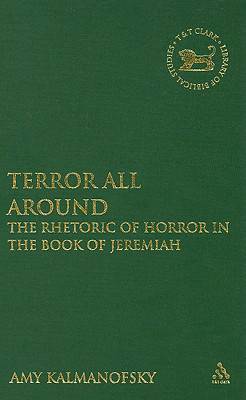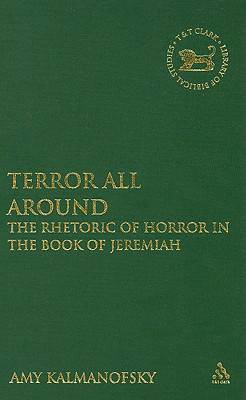
Je cadeautjes zeker op tijd in huis hebben voor de feestdagen? Kom langs in onze winkels en vind het perfecte geschenk!
- Afhalen na 1 uur in een winkel met voorraad
- Gratis thuislevering in België vanaf € 30
- Ruim aanbod met 7 miljoen producten
Je cadeautjes zeker op tijd in huis hebben voor de feestdagen? Kom langs in onze winkels en vind het perfecte geschenk!
- Afhalen na 1 uur in een winkel met voorraad
- Gratis thuislevering in België vanaf € 30
- Ruim aanbod met 7 miljoen producten
Zoeken
€ 254,45
+ 508 punten
Omschrijving
Among the many strategies of persuasive speech, biblical prophets often employ a rhetoric of horror. Prophets use verbal threats and graphic images of destruction to terrify their audience. Contemporary horror theory provides insight into the rhetoric of horror employed by the prophets. In this book, Amy Kalmanofsky applies horror theory to the book of Jeremiah and considers the nature of biblical horror and the objects that provoke horror, as well as the ways texts like Jeremiah work to elicit horror from their audience.
Kalmanofsky begins by analyzing the emotional response of horror as reflected in characters' reactions to terrifying entities in the book of Jeremiah. Horror, she concludes, is a composite emotion consisting of fear in response to a threatening entity and a corresponding response of shame either directed toward one's self or felt on behalf of another. Having considered the nature of horror, she turns to the objects that elicit horror and consider their ontological qualities and the nature of the threat they pose. There are two central monstrous figures in the book of Jeremiah-aggressor God and defeated Israel. Both of these monsters refuse to be integrated into and threaten to disintegrate the expected order of the universe. She then presents a close, rhetorical reading of Jeremiah 6 and consider the way this text works to horrify its audience. The book concludes by considering fear's place within religious experience and the theological implications of a rhetoric that portrays God and Israel as monsters.
Kalmanofsky begins by analyzing the emotional response of horror as reflected in characters' reactions to terrifying entities in the book of Jeremiah. Horror, she concludes, is a composite emotion consisting of fear in response to a threatening entity and a corresponding response of shame either directed toward one's self or felt on behalf of another. Having considered the nature of horror, she turns to the objects that elicit horror and consider their ontological qualities and the nature of the threat they pose. There are two central monstrous figures in the book of Jeremiah-aggressor God and defeated Israel. Both of these monsters refuse to be integrated into and threaten to disintegrate the expected order of the universe. She then presents a close, rhetorical reading of Jeremiah 6 and consider the way this text works to horrify its audience. The book concludes by considering fear's place within religious experience and the theological implications of a rhetoric that portrays God and Israel as monsters.
Specificaties
Betrokkenen
- Auteur(s):
- Uitgeverij:
Inhoud
- Aantal bladzijden:
- 176
- Taal:
- Engels
- Reeks:
- Reeksnummer:
- nr. 390
Eigenschappen
- Productcode (EAN):
- 9780567026569
- Verschijningsdatum:
- 15/06/2008
- Uitvoering:
- Hardcover
- Formaat:
- Ongenaaid / garenloos gebonden
- Afmetingen:
- 155 mm x 236 mm
- Gewicht:
- 385 g

Alleen bij Standaard Boekhandel
+ 508 punten op je klantenkaart van Standaard Boekhandel
Beoordelingen
We publiceren alleen reviews die voldoen aan de voorwaarden voor reviews. Bekijk onze voorwaarden voor reviews.









